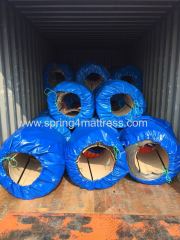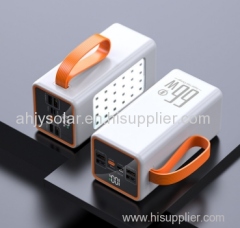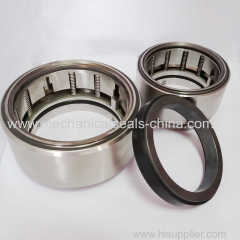Product (92)
- Motor (4)
- solar charge (6)
- Snake springss (2)
- Compression springs (15)
- Tension springs (6)
- Torsion springs (6)
- Mono solar panel (17)
- Poly solar panel (10)
- Custom Metal Stamping (7)
- Custom Plastic Parts (1)
- Portable unit power system (3)
- Colored solar panel (4)
- Solar module (6)
- Snake Springs (1)
- Others (4)
blog (9)
Credit Report
Products Index
Company Info
Ningbo Sinopower Co., Ltd. [China (Mainland)]
Business Type:Trading Company
City: Ningbo
Province/State: Zhejiang
Country/Region: China (Mainland)
blog
Solar Panel System Otherwise
For months Mono solar panel now I am sure that many of you have heard or read bits and pieces of what exactly goes into a solar panel system otherwise known as photovoltaic solar electric system. However, there are still a large number of you who have no idea how much energy they can generate, what components are included in a grid-tie system versus an off-grid system and several other pieces of information we will attempt to answer in this and upcoming blog articles. To start out with we will go through some of the most basic information which will help to put everything in a solar panel system into perspective for any future considerations you maybe deliberating.
Photovoltaic Solar Modules
Photovoltaic modules or PV panels as they are more commonly known currently are available to be used in solar electric panel configurations in one of three types:
1. Amorphous - These are not really crystals, but a thin layer of silicon deposited on a base material such as metal or glass to create the solar module. These Amorphous solar panels are much cheaper, but their energy efficiency is also much less so more square footage is required to produce the same amount of power as the Mono-crystalline or Polycrystalline type of solar module . Amorphous solar modules can even be made into long sheets of roofing material to cover large areas of a south facing roof surface.
2. Polycrystalline Modules - Often called Multi-crystalline, solar panels made with Polycrystalline cells are a little less expensive & slightly less efficient than Mono-crystalline cells because the cells are not grown in single crystals but in a large block of many crystals. This is what gives them that striking shattered glass appearance. Like Mono-crystalline cells, they are also then sliced into wafers to produce the individual cells that make up the solar panel. These types of panels are also only typically warrantied by their manufacturers for a period of 10 years and degrade much faster than mono-crystalline panels.
3. Mono-crystalline Modules - one of the most effective and high-priced pv modules are made with Mono-crystalline cells. These pv tissues use unbelievably pure silicon and include a intricate crystal progress process. lengthy silicon rods are made that are minimize into slices of .2 mm to .4 mm thick discs or wafers that are then processed into particular tissues which come going to be wired collectively using the pv module. These sorts of panels are warrantied by their makers for just about any time period of 25 many years usually and will by much out last any polycrystalline panels.
The most common query I am inquired concerning pv module plan sizing would be, "How huge can be an X kw pv panel system?" pv modules are routinely mounted and wired in what is regarded like a sequence configuration or daisy chain. This signifies the fact that wattage worth of every panel is mathematically additional collectively so in situation you possess a 1kw pv panel plan then that could imply each of the particular pv modules when their wattage is additional collectively equals 1000 watts or one kw. How very much does a 1kw pv panel plan create in energy every day? this could be on the way to be the 2nd most common query as well as the solution is on the way to be the simple fact that on common a 1kw pv panel plan will create roughly 3.63 kWh (kilowatt hours) of electrical vitality as can be measured by your electrical meter of your building. offered this you can swiftly approximate how loads of kilowatt several hours of vitality bigger pv photovoltaic equipment could generate.
Due to their relatively minimal ability in producing electrical energy the option right here is apparent that you simply would preferably use PV pv modules produced of mono-crystalline pv tissues to make certain that you simply maximize your pv panel equipment vitality output using the smallest area possible.
The most common query I am inquired concerning pv module plan sizing would be, "How huge can be an X kw pv panel system?" pv modules are routinely mounted and wired in what is regarded like a sequence configuration or daisy chain. This signifies the fact that wattage worth of every panel is mathematically additional collectively so in situation you possess a 1kw pv panel plan then that could imply each of the particular pv modules when their wattage is additional collectively equals 1000 watts or one kw. How very much does a 1kw pv panel plan create in energy every day? this could be on the way to be the 2nd most common query as well as the solution is on the way to be the simple fact that on common a 1kw pv panel plan will create roughly 3.63 kWh (kilowatt hours) of electrical vitality as can be measured by your electrical meter of your building. offered this you can swiftly approximate how loads of kilowatt several hours of vitality bigger pv photovoltaic equipment could generate.
Due to their relatively minimal ability in producing electrical energy the option right here is apparent that you simply would preferably use PV pv modules produced of mono-crystalline pv tissues to make certain that you simply maximize your pv panel equipment vitality output using the smallest area possible.
Next Page:
Choosing Solar Panels For Your Home
.gif)






